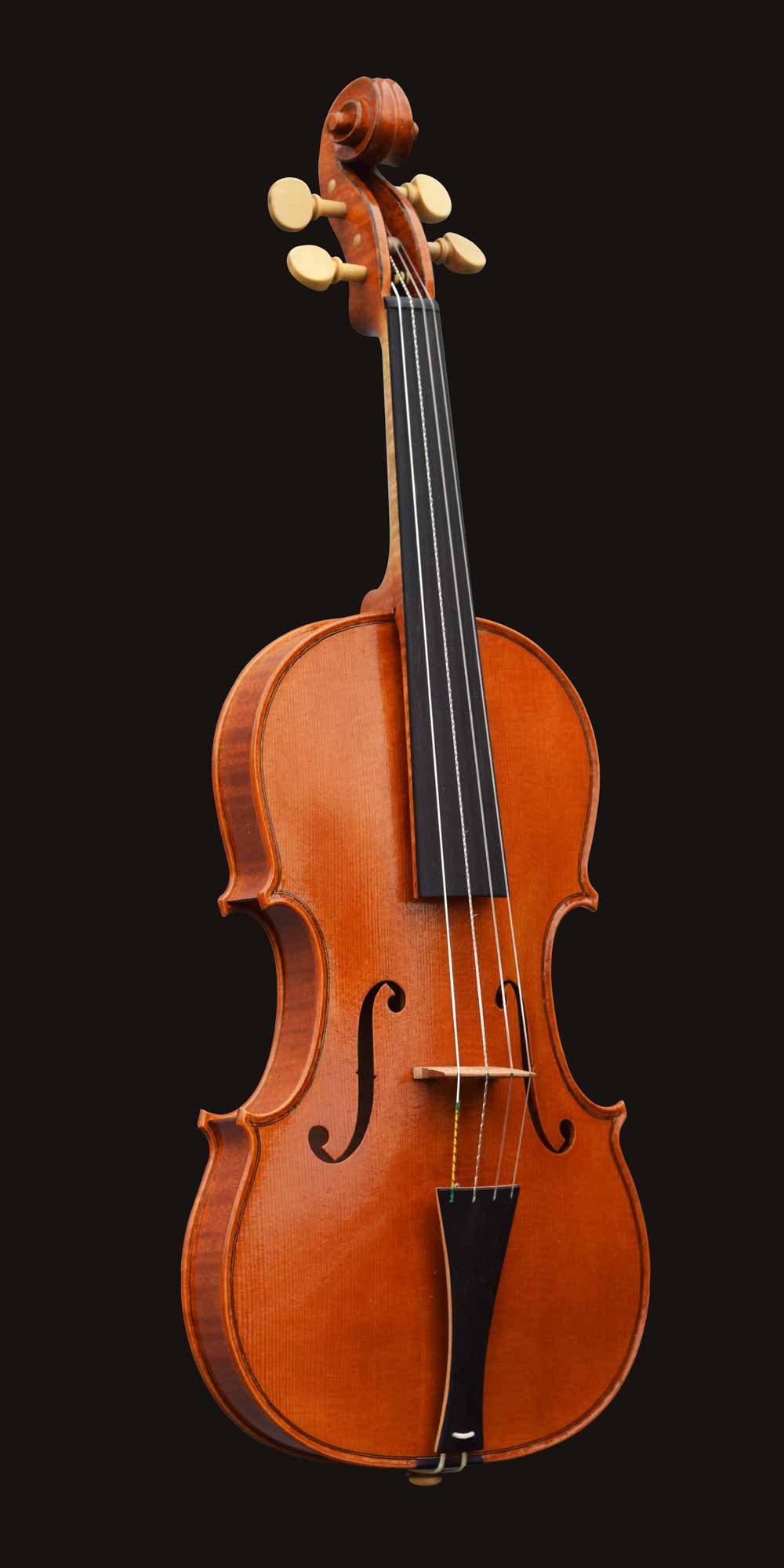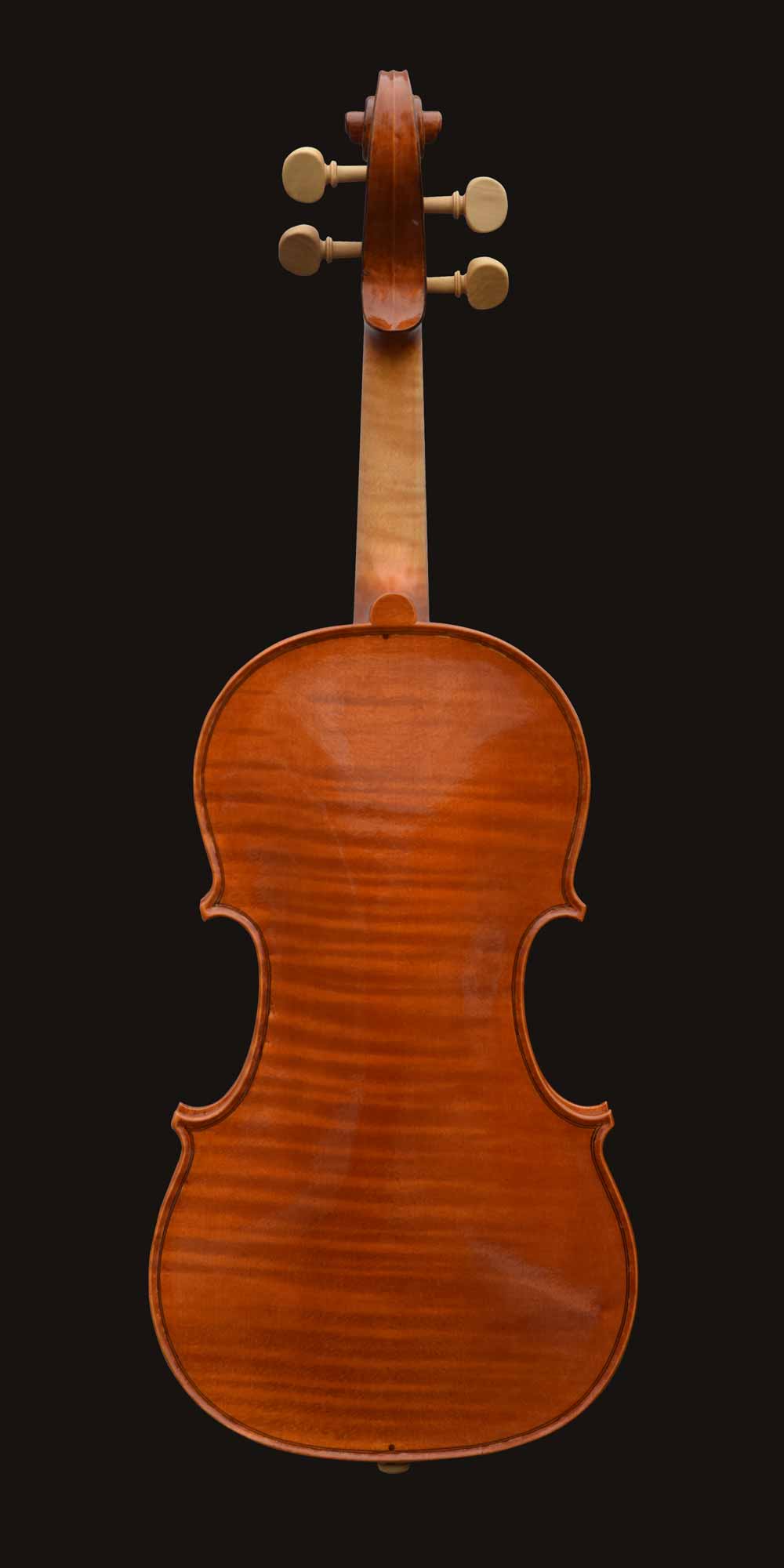
A rare breed
November 2018
Next week I am taking my newly finished baroque violin to its new home at the RNCM in Manchester. This is the first baroque violin [excepting the RNCM project last March] that I have made for a long time. Except for the neck, much of a baroque instrument is the same as a modern one, most of the difference being in the fitting up; the soundpost is thinner and the bridge is quite different in shape. The tailpiece and fingerboard have a veneer of ebony over the body of maple, and for this instrument, I used unstained boxwood for the pegs. Boxwood grows in Europe, and unlike the African Blackwood* which I otherwise like to use for pegs, it is not an endangered species on the CITES list.
Boxwood is a lovely wood to turn on a lathe and to use in a peg shaper, but nowadays boxwood pegs are usually stained to make them brown. This process uses nitic acid and ammonia, both substances I prefer not to handle, but originally, the violin makers would have left the boxwood in its natural creamy yellow colour, which, in time does darken to a lighter but more vibrant and natural looking brown than the stained version.
This commission to make a baroque instrument gave me the opportunity to make an instrument as they would have been made in the 17th century, not only with nails for the neck, gut strings, but also with black lines on the rib ends and on the chamfer of the scroll, unstained pegs, and varnish in a natural state, straight from the brush. Although many of my instruments are antiqued to some degree, I do like the freshness of a new, as-new, instrument, and making a baroque instrument allows this to be taken one stage further.
